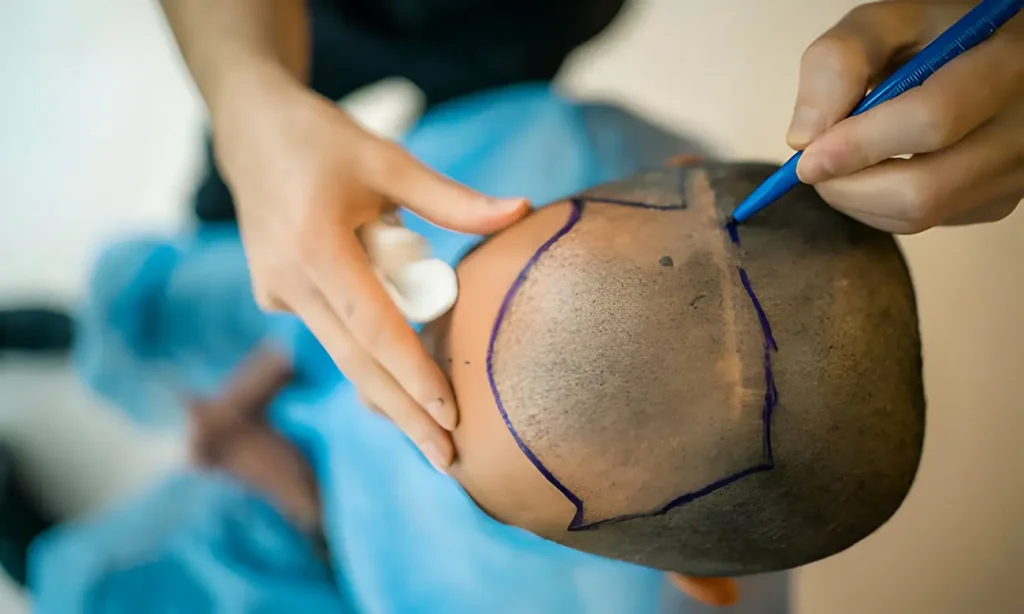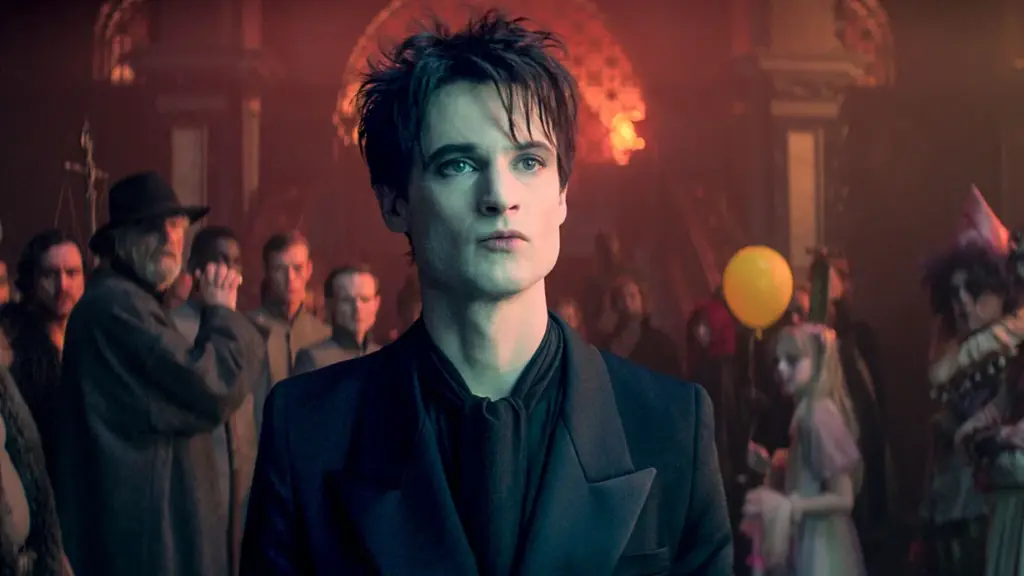Type and hit Enter to search
Experts in aesthetic surgery, dermatology, and beauty bring you the latest trends, research, and advice to help you make informed decisions about your appearance and health.
A web platform dedicated to aesthetic surgery, dermatology, and beauty, where expertise meets innovation, and your desires and needs become our mission. In a world where appearance and health go hand in hand, our platform leads the revolution, delivering the latest trends, research, and expert advice directly to you.
Our team consists of highly skilled professionals in the fields of aesthetic surgery and dermatology, committed to providing reliable information and guidance that will help you make informed choices about your appearance and well-being. We understand that every individual has unique needs and desires, which is why we approach each person with the utmost care and professionalism.
Powered by Aestetica Web Design © 2024
New Hair Awakens in Belgrade: Recovery After Transplantation
If your new hair could talk, it would surely have something to say about the recovery adventure in Belgrade. From the first night after the transplant, through showering with a dose of caution, to returning to everyday life with style - this is not just a story about hair, but about a journey that changes lives. Join us on this exciting journey and discover how your new hair becomes your best friend.
The Day After: The Morning After the Transplant
Imagine waking up after a long and arduous night spent dreaming of being chased by monsters with 80s hairstyles. You open your eyes, and the first thought that crosses your mind is: “I have new hair!” But before you start celebrating this big moment, remember that you have a road to recovery ahead of you that resembles the script of an adventure movie – only this time the adventure is a little less extreme and takes place in your bedroom.
The first day after a hair transplant is like the morning after a big party. You wake up, feel a little confused, and wonder what exactly happened the day before. The first look in the mirror can be shocking: you see something that looks like little hair soldiers lined up in perfect rows on your head. This is the moment when you realize that your new hair is not ready for the red carpet yet – in fact, it looks like it’s ready for a masked military exercise.
How to deal with the first night? The recommendation is simple: sleep as if you were on vacation in zero gravity – your head should be slightly raised. This will help you avoid swelling, and you will also feel like you are an astronaut on a secret hair recovery mission. And what to expect from the first look in the mirror? Be prepared for a mix of surprise and admiration for the wonders of modern medicine, along with a dose of reality that you still have a long road to recovery ahead of you.
Postoperative Care Rules
Postoperative care after a hair transplant may sound like a series of strict instructions that might make you feel like you’ve just been recruited into the army. But don’t worry, the goal is to stay on the right path to recovery, not to learn how to salute.
Imagine that the instructions for postoperative care are like the rules for caring for a new pet – only this pet is your hair. Rule number one: gently wash your new hair. Imagine washing a delicate silk fabric, not scrubbing a frying pan. Gentleness is key.
Second rule: avoid the sun like you’re a vampire. The sun’s rays can be harmful to your new hair in the early days of recovery. Wear a hat if you have to go outside, but don’t forget it’s not Halloween, so avoid those with too many feathers or glitter.
Third rule: alcohol and cigarettes are off-limits. Imagine that they are the bad guys from the movies that your new hair simply can’t stand. This is not the time to party, this is the time to recover.
The growth of new hair is like watching paint dry – only it’s much, much slower. Give your new hair time to shine in its full glory, and know that every new follicle is worth the wait.
Showering and Hair Care: First Steps
The first time you decide to take a shower after a hair transplant, you might feel like you’re trying to defuse a bomb, and your tool is baby shampoo. The key is to be as gentle as possible – imagine washing the most delicate thing in the world, something like the first leaf on a young tree or the wings of a butterfly napping on your palm.
The washing instructions may sound like they are giving you the codes to launch nuclear missiles: “Use warm, but not too hot, water. Apply shampoo directly to your palms, then gently transfer it to your scalp.” You can imagine how in the silence of the bathroom only your concentrated breath can be heard as you carefully distribute the shampoo, being careful not to make any sudden movements that could endanger your newly acquired treasure.
But actually, all you need is a little patience and a lot of tenderness. Imagine you’re on a first date with your own hair. You want to make a good impression, be gentle and careful, and you definitely don’t want to spoil anything with pressure that could result in an unwanted outcome.
Returning to Everyday Life
Returning to everyday activities after a hair transplant can be like a scene from a comedy where the main character tries to get through the day unnoticed, but ends up attracting more attention than he ever thought possible. Imagine the first day you return to the gym. You try to get on the treadmill, wearing a wide-brimmed hat to protect your new hair, only to realize that you have become the main attraction, and people around you are wondering if you might be the new incarnation of Indiana Jones exercising for the next big adventure.
Or, the first day back at work. You walk around the office with a little more caution than usual, aware that your head is attracting looks like a new exhibit at the museum. Colleagues watch you with a mixture of curiosity and confusion, trying to figure out if it’s just a new fashion accessory or if you’ve decided to go in a whole new direction with a hair transplant. You can add a humorous comment that you were thinking of telling everyone that it’s actually an experiment in which you’re testing how human hair reacts to fluorescent office light.
The key to a successful return to everyday life lies in the ability to laugh at yourself and the situations you find yourself in. Accept the fact that people will be curious, and some may even be a little confused. But over time, as your hair begins to grow and recovery becomes just another interesting chapter in your life story, you will remember these moments with a smile, knowing that you have gone through a transformation journey that is a little unusual, but ultimately very rewarding.
Navigating the Challenges of Recovery
Ah, swelling and redness – the inevitable companions of every hair transplant, like fashion trends that are so bad they become legendary. Yes, we’re talking about you, neon green bangs from the 80s. But fear not, there is a way to deal with these temporary “fashion choices” of your skin.
Imagine the swelling as if you are wearing invisible sunglasses the size of your forehead. Yes, it looks ridiculous, but sunglasses were once reserved exclusively for beaches. Now they are a fashion accessory. Swelling? Just another accessory that will pass. And while you wait, you can practice your best “incognito” look for the neighbors.
Redness? Imagine you got a little carried away with the blush. We’ve all been there, especially in our teenage years when we thought more meant better. Now, with the redness after the transplant, you have the opportunity to relive those days with a little more style – and stories to tell.
How to mask it? Resort to the good old trick with scarves and hats. Not only will you protect your new hair and scalp, but you can look like a mysterious stranger in a cafe, inspiring curious glances. Or, if you’re feeling particularly creative, why not try some of those fun filters on social media? Who says you can’t have green cheeks instead of red?
Sleeping After a Transplant
Sleeping after a hair transplant can feel like you’re trying to master a new sleeping skill, something between a yoga pose and acrobatics. The key is to find a position that not only protects your new hair but also reduces swelling. You may have thought your circus career was over before it even began, but here’s a chance to reconsider.
First, imagine you’re a vampire sleeping – but instead of a coffin, your choice is a comfortable pillow. Keeping your head elevated may sound like you’re preparing for an audition for the role of Dracula, but it actually helps reduce swelling. Plus, who wouldn’t want to wake up feeling like royalty?
If sleeping on your back gets boring, think of it as a challenge to improve your acrobatic skills. Imagine you’re in training for the “sleeper olympics” – the goal is to find a position that is comfortable, but also ensures that your new hair remains intact. You may not win a gold medal for sleeping, but you will surely win gold for best preservation of transplanted hair.
In any case, the key is to have fun with it. Sleeping can be a challenge, but with the right attitude and a little creativity, you can turn it into another adventure on the road to recovery after a hair transplant. Plus, you’ll have amazing stories to tell – “Have you ever heard of a vampire preparing for the sleeping olympics?”
Care and Maintenance: Invest in Your New Hair
Imagine that you have just become the proud owner of something very valuable, something that requires your undivided attention, care, and love. No, we are not talking about a new luxury car or an exotic pet. We are talking about your new hair. Yes, you read that right. Your new hair is like your new, very demanding pet, and it’s time to start your “homework” to ensure it grows happy, healthy, and shiny.
1: Regular hydration
Imagine your new hair as a plant craving water. You don’t want your new plant (read: hair) to wither from dehydration. Therefore, hydration comes not only from the outside, but also from the inside. Drink enough water every day as if it were the elixir of youth for your hair. Plus, you can pretend you’re in some kind of sci-fi movie where drinking water has revitalizing powers. Who knows, maybe it does?
2: Gentle combing
Combing your new hair should be like art. Imagine you are a painter and your hair is a canvas. Use a soft-bristled brush that won’t damage your new masterpiece. Gentle combing not only helps maintain the health of your hair but also stimulates the scalp, thereby promoting hair growth. Pretend you are an artist carefully shaping his latest work, and remember, every brushstroke is a stroke of genius.
3: Quality hair care products
Your new hair deserves only the best. This means quality sulfate-free shampoos, conditioners, and treatments that will nourish it without damage. Imagine you are a gourmet who chooses only the finest ingredients for his specialties. Your hair is your specialty, and quality hair care products are your ingredients. Choose carefully and be prepared for your hair to become the star of the evening at every event.
4: Sun protection
The sun, while the source of life, can be a real villain when it comes to your new hair. Therefore, sun protection becomes your new mantra. Wear hats, use hair protection products that contain SPF, and avoid sun exposure during peak hours. Pretend you are a secret agent whose mission is to protect a precious package (your hair) from the evil sun’s rays.
5: Regular visits to the hairdresser
Your new hair needs an expert to take care of it. Regular visits to the hairdresser are not just for haircuts; it is an opportunity for professional care and advice. Imagine that these visits are like going to tea with the queen – an opportunity to talk, refresh and ensure that your crown (read: hair) always looks impeccable.
By following this “homework,” you will not only ensure that your new hair grows healthy and strong, but you will also have fun along the way. Because, at the end of the day, hair care shouldn’t be just another chore; it should be an adventure.
Review by Dr. Marija Balković from Belgrade
Dr. Marija Balković, a renowned hair transplant expert from Belgrade, enthusiastically shared her extensive insights and opinions on the hair transplant recovery process, adding new dimensions to the understanding of this topic. Her approach to the topic was deeply analytical, emphasizing the importance of a personalized approach to each patient and the significance of integrating modern technologies into care procedures.
“Recovery after a hair transplant is not a one-sided process; it requires a multidisciplinary approach that includes both physical and psychological preparation of patients,” emphasized Dr. Balković. Reflecting on postoperative care, she added: “In Belgrade, we are particularly dedicated to applying individualized care plans that take into account the unique needs of each patient. This is not just about physical recovery, but also about ensuring that patients feel supported throughout the entire process.”
Dr. Balković highlighted the importance of psychological support after transplantation, emphasizing that “mental health is key to recovery, and the sense of community and support in Belgrade plays a big role in this aspect.” She believes that the emotional preparation of patients is as important as the physical one, and that a positive attitude can significantly contribute to a successful outcome.
Speaking about technological progress in hair transplantation, Dr. Balković expressed excitement about the innovations being developed in Belgrade. “We use advanced techniques and tools that enable more precise transplantation and reduce recovery time, thereby setting high standards in the industry,” she explained.
In addition, Dr. Balković emphasized the importance of proper nutrition and lifestyle in the recovery process. “A healthy diet, rich in vitamins and minerals, is key to promoting hair growth and maintaining overall body health. We also advise patients to reduce stress and devote time to activities that bring them joy and relaxation,” she said.
Dr. Balković emphasized the importance of choosing the right hair transplant specialist. “Choosing the right specialist in Belgrade, where there are many qualified doctors, is crucial. Patients should look for doctors who not only have extensive experience and knowledge, but also those who show empathy and understanding for their individual needs,” she concluded.
Biography of Dr. Marija Balković
Dr. Marija Balković graduated from the Faculty of Medicine in Belgrade. She specialized in plastic and reconstructive surgery at the Military Medical Academy in Belgrade. From 1996 to 2006, she worked at the Clinic for Plastic and Reconstructive Surgery at the Military Medical Academy. In 2007, she worked at the DHI Clinic in Lavrio, Greece. Since 2014, she has been working at her own Clinic for Plastic and Aesthetic Surgery, Medical Beauty Center – MBC, in Belgrade. Dr. Balković has continuously improved her skills in the field of aesthetic surgery, with a particular focus on hair transplantation. She was the first in Serbia to start applying the FUE method of hair transplantation.
Reference





